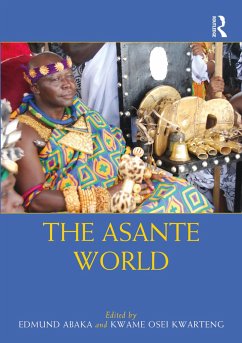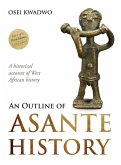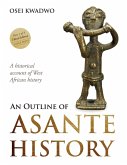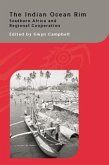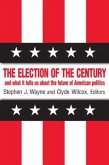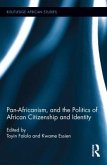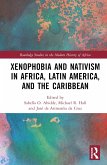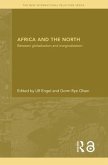The Asante World
Herausgeber: Abaka, Edmund; Kwarteng, Kwame Osei
The Asante World
Herausgeber: Abaka, Edmund; Kwarteng, Kwame Osei
- Broschiertes Buch
- Merkliste
- Auf die Merkliste
- Bewerten Bewerten
- Teilen
- Produkt teilen
- Produkterinnerung
- Produkterinnerung
The Asante World provides fresh perspectives on the Asante, the largest Akan group in Southern Ghana, and what new scholars are thinking and writing about the "world the Asante made."
Andere Kunden interessierten sich auch für
![An Outline of Asante History Part 1 An Outline of Asante History Part 1]() Osei KwadwoAn Outline of Asante History Part 1146,99 €
Osei KwadwoAn Outline of Asante History Part 1146,99 €![An Outline of Asante History Part 1 An Outline of Asante History Part 1]() Osei KwadwoAn Outline of Asante History Part 1113,99 €
Osei KwadwoAn Outline of Asante History Part 1113,99 €![The Indian Ocean Rim The Indian Ocean Rim]() The Indian Ocean Rim67,99 €
The Indian Ocean Rim67,99 €![The Election of the Century The Election of the Century]() Stephen J. WayneThe Election of the Century60,99 €
Stephen J. WayneThe Election of the Century60,99 €![Pan-Africanism, and the Politics of African Citizenship and Identity Pan-Africanism, and the Politics of African Citizenship and Identity]() Pan-Africanism, and the Politics of African Citizenship and Identity206,99 €
Pan-Africanism, and the Politics of African Citizenship and Identity206,99 €![Xenophobia and Nativism in Africa, Latin America, and the Caribbean Xenophobia and Nativism in Africa, Latin America, and the Caribbean]() Xenophobia and Nativism in Africa, Latin America, and the Caribbean217,99 €
Xenophobia and Nativism in Africa, Latin America, and the Caribbean217,99 €![Africa and the North Africa and the North]() Africa and the North67,99 €
Africa and the North67,99 €-
-
-
The Asante World provides fresh perspectives on the Asante, the largest Akan group in Southern Ghana, and what new scholars are thinking and writing about the "world the Asante made."
Hinweis: Dieser Artikel kann nur an eine deutsche Lieferadresse ausgeliefert werden.
Hinweis: Dieser Artikel kann nur an eine deutsche Lieferadresse ausgeliefert werden.
Produktdetails
- Produktdetails
- Verlag: Routledge
- Seitenzahl: 356
- Erscheinungstermin: 9. Januar 2023
- Englisch
- Abmessung: 246mm x 174mm x 19mm
- Gewicht: 634g
- ISBN-13: 9781032004778
- ISBN-10: 1032004770
- Artikelnr.: 70830754
- Herstellerkennzeichnung
- Libri GmbH
- Europaallee 1
- 36244 Bad Hersfeld
- gpsr@libri.de
- Verlag: Routledge
- Seitenzahl: 356
- Erscheinungstermin: 9. Januar 2023
- Englisch
- Abmessung: 246mm x 174mm x 19mm
- Gewicht: 634g
- ISBN-13: 9781032004778
- ISBN-10: 1032004770
- Artikelnr.: 70830754
- Herstellerkennzeichnung
- Libri GmbH
- Europaallee 1
- 36244 Bad Hersfeld
- gpsr@libri.de
Edmund Abaka is Associate Professor of History and International Studies, University of Miami. His publications include Kola is God's Gift: Agricultural Production, Export Initiatives & the Kola Industry of Asante & the Gold Coast (2005); House of Slaves and "Door of No Return": Gold Coast/Ghana Slave Forts, Castles and Dungeons and the Atlantic Slave Trade (2012). Kwame Osei Kwarteng is a Professor of History, former Head of the Department of History, and currently Dean, Faculty of Arts, University of Cape Coast, Ghana. He is the author of A History of Ahafo 1719-1958: Ahafo from dependence to independence (2011) and A History of the Elephant in Ghana in the Twentieth Century (2011).
1. Introduction Part 1 2. The Ahafo-Asante Relations, 1712-1935 3. The
Asante Factor in the Political Re-Orientation of Northern Ghana: A
Historical Evaluation of the Bassari-Dagomba Relations, 1745-1876 4. Asante
Imperium Expansion: Imperial Outlook and Construction of Empire 5.
Contending Empires: Asante and Britain From the Seventeenth to the
Nineteenth Centuries Part 2 6. Historical Reconstruction of an Asante
Ancillary State: Origin, Migration and Settlement of Sekyere Kwamang 7.
Dupuis' Discourse on Asante in the 19th Century: An Evaluation of the
Islamic Themes in the Journal of Residence in Ashantee (1824) 8. Why Islam
Did Not Make a Significant Impact on Asante During the 18th and 19th
Centuries Part 3 9. Red Gold: Kola Nuts, the Kola Nut Trade and the
Political Economy of AsanteEdmund Abaka 10. An Indigenous Innovative Touch:
Origin and Significance of the Kente Cloth in Asante Culture 11. Adinkra
Symbols and Proverbs as Tools for Elucidating Indigenous Asante Political
Thought 12. The Tropology of Akan Drum Language: Sounds and Meanings From
the Mamponghene's Drum Appellation Part 4 13. A Political Architecture of
Leadership Crisis of the Kumasi Central Mosque From 1970 to 2013 14.
Claiming Asante: The Akan Origins of Jamaican Maroons Part 5 15. Secular
Government and the Court of the Asante Ahemaa in the 21st Century: An
Ethnographic Account of Ejisu and Juaben Traditional Areas 16. Epidemiology
and Local Responses to Diseases in Asante: A Focus on Kumase Since the
Beginning of the Twentieth Century 17. Girl Child Education in Asante,
1901-1957
Asante Factor in the Political Re-Orientation of Northern Ghana: A
Historical Evaluation of the Bassari-Dagomba Relations, 1745-1876 4. Asante
Imperium Expansion: Imperial Outlook and Construction of Empire 5.
Contending Empires: Asante and Britain From the Seventeenth to the
Nineteenth Centuries Part 2 6. Historical Reconstruction of an Asante
Ancillary State: Origin, Migration and Settlement of Sekyere Kwamang 7.
Dupuis' Discourse on Asante in the 19th Century: An Evaluation of the
Islamic Themes in the Journal of Residence in Ashantee (1824) 8. Why Islam
Did Not Make a Significant Impact on Asante During the 18th and 19th
Centuries Part 3 9. Red Gold: Kola Nuts, the Kola Nut Trade and the
Political Economy of AsanteEdmund Abaka 10. An Indigenous Innovative Touch:
Origin and Significance of the Kente Cloth in Asante Culture 11. Adinkra
Symbols and Proverbs as Tools for Elucidating Indigenous Asante Political
Thought 12. The Tropology of Akan Drum Language: Sounds and Meanings From
the Mamponghene's Drum Appellation Part 4 13. A Political Architecture of
Leadership Crisis of the Kumasi Central Mosque From 1970 to 2013 14.
Claiming Asante: The Akan Origins of Jamaican Maroons Part 5 15. Secular
Government and the Court of the Asante Ahemaa in the 21st Century: An
Ethnographic Account of Ejisu and Juaben Traditional Areas 16. Epidemiology
and Local Responses to Diseases in Asante: A Focus on Kumase Since the
Beginning of the Twentieth Century 17. Girl Child Education in Asante,
1901-1957
1. Introduction Part 1 2. The Ahafo-Asante Relations, 1712-1935 3. The
Asante Factor in the Political Re-Orientation of Northern Ghana: A
Historical Evaluation of the Bassari-Dagomba Relations, 1745-1876 4. Asante
Imperium Expansion: Imperial Outlook and Construction of Empire 5.
Contending Empires: Asante and Britain From the Seventeenth to the
Nineteenth Centuries Part 2 6. Historical Reconstruction of an Asante
Ancillary State: Origin, Migration and Settlement of Sekyere Kwamang 7.
Dupuis' Discourse on Asante in the 19th Century: An Evaluation of the
Islamic Themes in the Journal of Residence in Ashantee (1824) 8. Why Islam
Did Not Make a Significant Impact on Asante During the 18th and 19th
Centuries Part 3 9. Red Gold: Kola Nuts, the Kola Nut Trade and the
Political Economy of AsanteEdmund Abaka 10. An Indigenous Innovative Touch:
Origin and Significance of the Kente Cloth in Asante Culture 11. Adinkra
Symbols and Proverbs as Tools for Elucidating Indigenous Asante Political
Thought 12. The Tropology of Akan Drum Language: Sounds and Meanings From
the Mamponghene's Drum Appellation Part 4 13. A Political Architecture of
Leadership Crisis of the Kumasi Central Mosque From 1970 to 2013 14.
Claiming Asante: The Akan Origins of Jamaican Maroons Part 5 15. Secular
Government and the Court of the Asante Ahemaa in the 21st Century: An
Ethnographic Account of Ejisu and Juaben Traditional Areas 16. Epidemiology
and Local Responses to Diseases in Asante: A Focus on Kumase Since the
Beginning of the Twentieth Century 17. Girl Child Education in Asante,
1901-1957
Asante Factor in the Political Re-Orientation of Northern Ghana: A
Historical Evaluation of the Bassari-Dagomba Relations, 1745-1876 4. Asante
Imperium Expansion: Imperial Outlook and Construction of Empire 5.
Contending Empires: Asante and Britain From the Seventeenth to the
Nineteenth Centuries Part 2 6. Historical Reconstruction of an Asante
Ancillary State: Origin, Migration and Settlement of Sekyere Kwamang 7.
Dupuis' Discourse on Asante in the 19th Century: An Evaluation of the
Islamic Themes in the Journal of Residence in Ashantee (1824) 8. Why Islam
Did Not Make a Significant Impact on Asante During the 18th and 19th
Centuries Part 3 9. Red Gold: Kola Nuts, the Kola Nut Trade and the
Political Economy of AsanteEdmund Abaka 10. An Indigenous Innovative Touch:
Origin and Significance of the Kente Cloth in Asante Culture 11. Adinkra
Symbols and Proverbs as Tools for Elucidating Indigenous Asante Political
Thought 12. The Tropology of Akan Drum Language: Sounds and Meanings From
the Mamponghene's Drum Appellation Part 4 13. A Political Architecture of
Leadership Crisis of the Kumasi Central Mosque From 1970 to 2013 14.
Claiming Asante: The Akan Origins of Jamaican Maroons Part 5 15. Secular
Government and the Court of the Asante Ahemaa in the 21st Century: An
Ethnographic Account of Ejisu and Juaben Traditional Areas 16. Epidemiology
and Local Responses to Diseases in Asante: A Focus on Kumase Since the
Beginning of the Twentieth Century 17. Girl Child Education in Asante,
1901-1957

